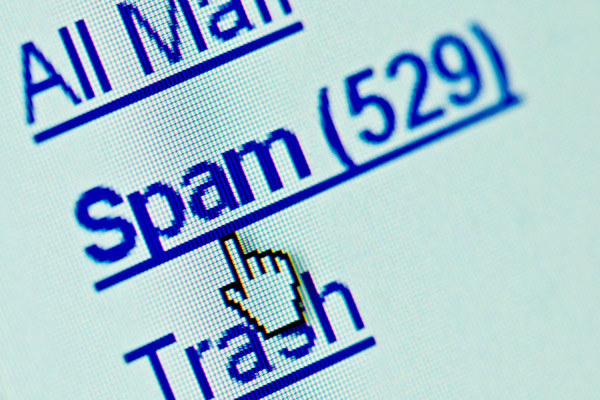Are your emails getting through?

Article Highlights:
- Despite efforts, your emails to customers are going unread.
- How can you increase your read/reply rate?
Dealerships are accustomed to emailing follow-up and promotional messages to their customers. It’s a tried and true communication channel, but getting emails read by customers is becoming increasingly difficult. Why?
To find the answer, let’s investigate how email service providers (ESPs) handle dealership emails.
Google is one of the largest ESPs with its popular platform, Gmail. In 2013, Google created a new format which split the Gmail inbox into five tabs to help sort emails: Primary, Social, Updates, Promotions, and Forums. Most of a user’s attention is on the Primary inbox, so the other inboxes are less optimal places for your email to end up. Spam, or junk mail, is another black hole for email that is meant for “any messages that are unwanted and/or unsolicited by the receiving party.” Because of filters like these set in place by ESPs, only 79% of emails sent by genuine email marketers reach subscribers’ inboxes.1
When you send an email to a customer and they’re uninterested in reading it, they’ll just delete it without opening. If you keep trying to email the customer in the following days and they keep deleting your emails, the third or fourth email will automatically filter into the promotions tab and any future communications will perhaps never be seen again.
This issue is compounded as it happens across your customer base. Add up thousands of Gmail users all exhibiting the same behavior, and now all your emails organically go to spam. Even an email to a brand-new customer that proactively asked for information could go right to spam.
So, what is a decent and reliable vehicle marketer to do? Stop sending emails people don’t read.
Targeting
While it’s tedious, keeping an email list under 500 recipients will help. Some CRMs and marketing platforms do batch sends (group emails into small batches, like 100 or less, sent out over time). However, you should still be careful with this method. The trigger is not how many emails are in a single send – it is how many emails are sent in a 24-36 hour period. Say you send 3,000 emails, 50 at a time, over 24 hours; the ESP still sees 3,000 emails from a domain (@yourdealership.com) with similar content and may mark it as spam.
Avoidable Emails
- Often, when I work with salespeople on CRM processes and functions, an anniversary call comes up. This should alert the most strident and eager salesperson to reach out and see if the customer is interested in a new car. Unfortunately, most salespeople default to sending an impersonal email that will likely not get opened.
- Consider the happy birthday email automatically sent out of the CRM from the salesperson. While it’s nice to take this task off the salesperson’s daily work plan, a personal phone call can go much further. Worst case, the salesperson leaves a 30 second voicemail. Best case, it leads to a conversation and a sales opportunity.
Email Alternatives
Phone calls allow us to use inflection and immediate response to maintain the relationship. Phone calls are ten times more likely to lead to sales.2 Even if your phone call goes to voicemail, you can still leave a compelling message they will be more likely to listen to than they are to read an email. A professional automotive salesperson should call five times as many prospects as they email.
Text is the communication preference of the younger generations and it tends to get quick results. It’s a sure way to be heard; SMS open rates are at 98%.3 But you should only use texting at certain times. Remember the communications should be very short. One should always get customers “opted-in” to the CRM as soon as possible. Keep the following in mind when using text messages to communicate with customers:
- Make sure texts are completed through the CRM. Say you are negotiating the sale of an automobile and precious details are communicated through text on a private device. If all parties are not present during the final stages of the deal, people who may need that data won’t have it if it’s not in the CRM.
- Be certain to follow the law. The opt-in rules and opt-out functionalities for text are clear and the punishment for running amok is expensive. Fees can be up to $500 per violation according to the Telephone Consumer Protection Act.
- It needs to be conversational. What would you say if this was a friend or acquaintance that you were texting? Template responses are often like billboards; good information but no reason to carry on the conversation.
- Use text to lead to a phone conversation. Don’t ask the customer “when would you like to come in?” Instead, move the customer from the written to the spoken. You’ll have much better control on the phone than in writing. Use statements like:
- “Are you available to talk tomorrow afternoon?”
- “Click on the phone number to speak to me directly.”
- Just like email, don’t text ‘happy anniversary’ or ‘happy birthday’. These should be a more personal phone call. You could even use a nice formatted letter on signed stationery in a handwritten envelope, or a postcard. It may end up in the trash, but it will make its way into your customer’s hands first.
Conclusion
Email isn’t a bad thing, but it is harder every day to connect with customers through this channel. It’s important to keep your options open and stay flexible. If you begin a relationship with a customer and an email is sent and opened, continue with that medium. However, if two or three emails have been sent and not opened, stop emailing them and continue with phone. Leave a compelling message or ask if they would prefer text. Continuing to send emails that go unopened only hurts you and your domain.
By reaching out to customers in other mediums and reducing email quantities sent, you avoid the spam folder and get more emails into customers’ inbox overall. We’ve seen dealerships’ read/reply rate go from 2% to over 35% by implementing actions like these.
For more consulting services information on CRM or customer communication practices, contact Reynolds Consulting Services at 800.657.9784 or send us an email: consulting@reyrey.com.
Sources
- ReturnPath
- BIA Advisory Services
- SlickText
Related Articles:

The Future of Variable Ops with Experts at NADA 2025
Explore how AI is transforming variable operations in automotive retailing with insights from NADA 2025. Learn about efficiency, profitability, and fraud prevention from industry leaders.

Decision made regarding the Vehicle Shopping Rule – now what?
Check out five key takeaways from the Vehicle Shopping Rule to keep your dealership safe from FTC enforcement actions.

3 Ways AI Can Elevate Your Dealership’s Online Inventory
On average, Americans are exposed to between 4,000 and 10,000 advertisements every day. From commercials on TV to billboards on your way to work, all…

The Pizza Playbook – What Ordering Pizza Teaches Us About F&I
For as long as I can remember, my family had “pizza night” every week. Without fail, every Friday evening we’d all gather around the computer…















